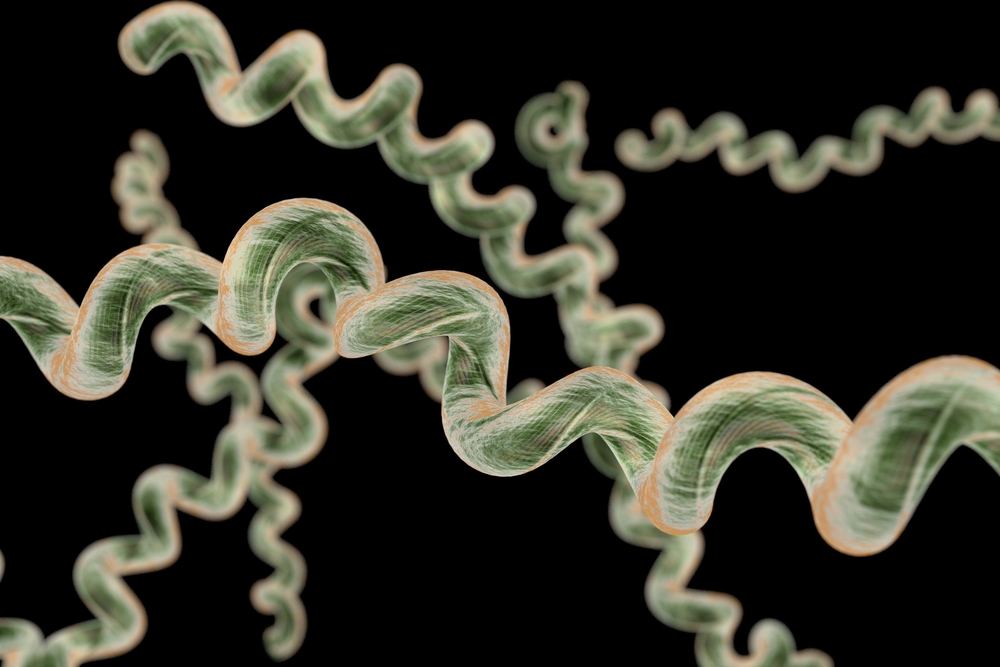
Overview
Lyme disease, also known as Lyme borreliosis, is a vector borne-disease caused by different species of the bacteria Borrelia, the commonest being Borrelia burgdorferi. It is transmitted to humans through the bite of an infected tick called a “deer tick.”
Ticks get infected after feeding on infected hosts and become capable of spreading infection. The tick must be fully attached to its host and feed for a well-extended period until the bacteria (Borrelia) reproduce to become infective. So, the infection is transmitted to humans only after they have been exposed for a longer time to an infected tick (48-72 hours for an adult tick).
The bacteria, through the bite from an infected tick, enter the skin and reach the bloodstream, from where they invade and affect different body systems.
An expanding red rash that reaches 30cm in diameter and looks like a bull’s eye is usually the first sign of infection. However, rashes may be absent in some cases.
Key Facts
- Lyme disease is spread through a bite from an infected tick that carries Borrelia.
- The primary sign of infection is a red rash (erythema migrans) which is painless and non-itchy and continues to increase in size. It appears a week later at the tick bite site and can be found in 70-80% of infected people. The rash resolves over a month.
- Other symptoms like fatigue, headache, body aches, and fever may accompany or appear without a rash.
- Lyme infection occurs in three stages: early localized, early disseminated, and chronic disseminated.
- It can affect different body systems, thereby producing several symptoms.
- People living in woodlands or grassy areas are at a higher risk of infection because of increased exposure to tick bites. Reducing exposure is the best defense against this disease.
- Laboratory tests detect antibodies produced by the body in response to B. burgdorferi. So, an infected person may test negative if the infection is recent and antibodies are yet to be produced by the body.
- Lyme borreliosis is rarely life-threatening. Proper treatment at the early stage using antibiotics gives complete recovery.
Stages of Infection
The phases of Lyme disease include:
- Early Localised Infection
This stage occurs within a few days to weeks of the tick bite. A red rash (erythema migrans) develops at the tick bite site. Also, nonspecific symptoms such as fatigue, fever, chills, and headache may occur with or without rash.
- Early Disseminated Infection
It occurs a few weeks after Borrelia burgdorferi enters the body. Rashes are found in different body parts, not just the tick bite sites. In addition, neurological problems are found in about 10-15% of people infected. Lymphocytic meningitis is present, and cerebrospinal fluid shows changes indicating invasion of the central nervous system.
- Chronic Disseminated Infection
This phase is reached a few months to years after infection. A period of latency when B. burgdorferi is inactive may occur.
The bacteria mainly invade the neurologic and musculoskeletal systems. A few joints may be affected, and inflammation of the knee or hip joints can become persistent. There is usually effusion and swelling from large joints with mild tenderness (pain). Swelling and pain generally resolve with time but may return occasionally.
Symptoms
The manifestations of Lyme disease depend on the stages of infection and emerge after the incubation period, which is always 1-2 weeks after infection.
Symptoms may include:
- The appearance of a rash that is neither itchy nor painful.
- Severe headache and neck stiffness.
- Erythema migrans(EM). Additional rashes on other regions of the body.
- Facial palsy, which is the sagging of one or both sides of the face.
- Arthritis of the knee and other large joints with mild to severe joint pain and swelling.
- Lyme carditis (palpitations and irregular heartbeat).
- Inflammation of the brain and spinal cord.
- Hearing loss and tinnitus (ringing in the ears)
Diagnosis
History of possible exposure to infected ticks coupled with physical findings (erythema migrans, facial palsy, Lyme arthritis) may be used to diagnose Lyme borreliosis.
In cases where symptoms are nonspecific, laboratory and imaging testing can be used to confirm infection.
- Laboratory Tests
Enzyme-linked Immunosorbent assay(ELISA) test: This is the most commonly used method for Lyme diagnosis. It detects the presence of antibodies produced by the immune system against the infection. These antibodies can be detected 4-6 weeks after infection. However, ELISA alone cannot be used as the ultimate basis for diagnosis because the early stage of this disease might show a negative result with this test.
Western blot test: It is a more specific test used if the ELISA test is ambiguous and also to confirm the diagnosis when the ELISA test is positive. The Western blot also detects antibodies produced against Borrelia burgdorferi.
- Imaging Tests
Magnetic resonance imaging (MRI) and single-photon emission computed tomography (SPECT) are used to identify abnormal patterns in the brain of a person affected by this disease.
Causes
Lyme disease is caused by the bacteria Borrelia, and different species of these bacteria exist. The bacteria is carried primarily by deer ticks, which spread infection through bites.
The risk factors for contracting this vector-borne disease include:
- Wet, green, bushy, or wooded areas where ticks are abundant.
- Warmer months of the year
- Outdoor jobs, such as surveying, landscaping, and forestry.
- Outdoor activities, including camping, gardening, and hiking
Prevention
Avoiding endemic areas and places where ticks live is the best way to prevent Lyme disease.
Some measures that reduce your likelihood of getting this disease include:
- Wearing protective clothing: Long-sleeved shirts, long pants with socks, and gloves when in grassy areas.
- Avoiding walking through low bushes or long grasses
- Cutting down grasses on your lawn regularly
- Apply insect repellant containing 20% DEET.
- Using fine-tipped forceps with hand gloves to remove ticks from skin or clothes
- Don’t crush the body of ticks while trying to kill them. This is to prevent the release of their fluids, which contain infectious agents.
- Once a tick has been identified and removed from the skin, wash the affected area with soap, water, and antiseptic.
Typical Treatments
According to the Mayo Clinic, timely detection and treatment ensure a quick recovery and prevent the progression of infection.
Antibiotics are used to treat Lyme disease. Clinical manifestations and the identified stage of infection determine the type of antibiotics, route of administration, and duration of treatment.
The treatment procedures are as follows:
- Oral antibiotics are used in the treatment of patients with stage one and stage two infections. Doxycycline and amoxicillin are given to adults and older children. Amoxicillin or cefuroxime is used for children younger than eight years, pregnant women, and nursing mothers.
- Intravenous antibiotics such as IV penicillin is used to treat neurological Lyme disease.
Conclusion
Lyme disease is spread by ticks carrying B. burgdorferi. The first sign of infection is a red rash that expands gradually over many days, reaching 30cm in diameter.
The signs and symptoms of infection can be distinguished in the different stages of the condition. When untreated, it can cause certain complications, such as arthritis, facial palsy, and hearing loss.
MOST COMMON






